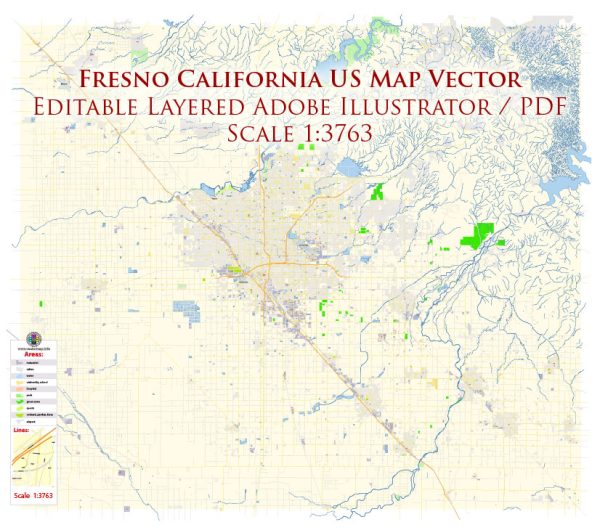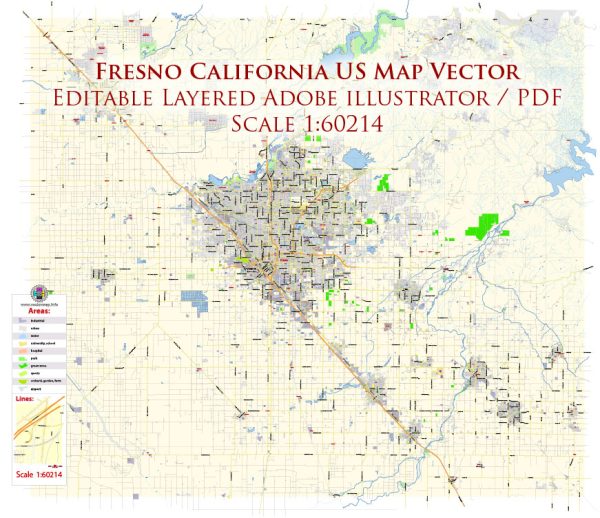Fresno, California, located in the heart of the San Joaquin Valley, has a diverse architectural landscape that reflects its history, culture, and economic development. Here’s a brief description of the architecture in Fresno:
- Historic Architecture:
- Downtown Fresno: The city’s historic downtown area features a mix of architectural styles from different periods. You can find Victorian-era buildings, Beaux-Arts structures, and Art Deco designs, which provide a glimpse into the city’s development over the years.
- Mission Revival:
- Fresno is home to several buildings designed in the Mission Revival style. This architectural style, popular in California during the late 19th and early 20th centuries, is characterized by stucco walls, red-tiled roofs, and arched doorways, often reminiscent of Spanish mission buildings.
- Mid-Century Modern:
- As in many American cities, Fresno has its share of Mid-Century Modern architecture. This style, prevalent from the 1940s to the 1960s, is known for its clean lines, flat roofs, and large windows. It’s often associated with the post-World War II period of growth and innovation.
- Agricultural and Rural Influence:
- Given Fresno’s proximity to California’s agricultural heartland, there are many farmhouses and barns in the surrounding countryside. These buildings often showcase practical, utilitarian designs, reflecting the agricultural nature of the region.
- Contemporary Architecture:
- In recent years, Fresno has seen a growing trend towards contemporary and sustainable architecture. Modern buildings incorporate eco-friendly materials and energy-efficient designs while blending with the city’s existing architectural heritage.
- Cultural and Religious Diversity:
- Fresno is known for its cultural and religious diversity, and this is reflected in its architecture. You can find a wide range of religious structures, from traditional churches and mosques to temples and synagogues, each with its unique architectural characteristics.
- Residential Architecture:
- Fresno’s neighborhoods feature a mix of housing styles, including Craftsman, Spanish Colonial Revival, and ranch-style homes. The city’s suburbs have grown over the years, offering a range of architectural designs to cater to different tastes.
- Public Buildings:
- Fresno boasts numerous public buildings and institutions, including City Hall, libraries, and schools. These buildings are designed to meet the practical needs of the community while often featuring notable architectural elements.
Overall, Fresno’s architecture reflects the city’s rich history, the influence of its agricultural heritage, and the modern developments that have shaped its urban landscape. As the city continues to evolve, architectural styles will continue to diversify, reflecting the changing needs and tastes of its residents.



 Author: Kirill Shrayber, Ph.D.
Author: Kirill Shrayber, Ph.D.